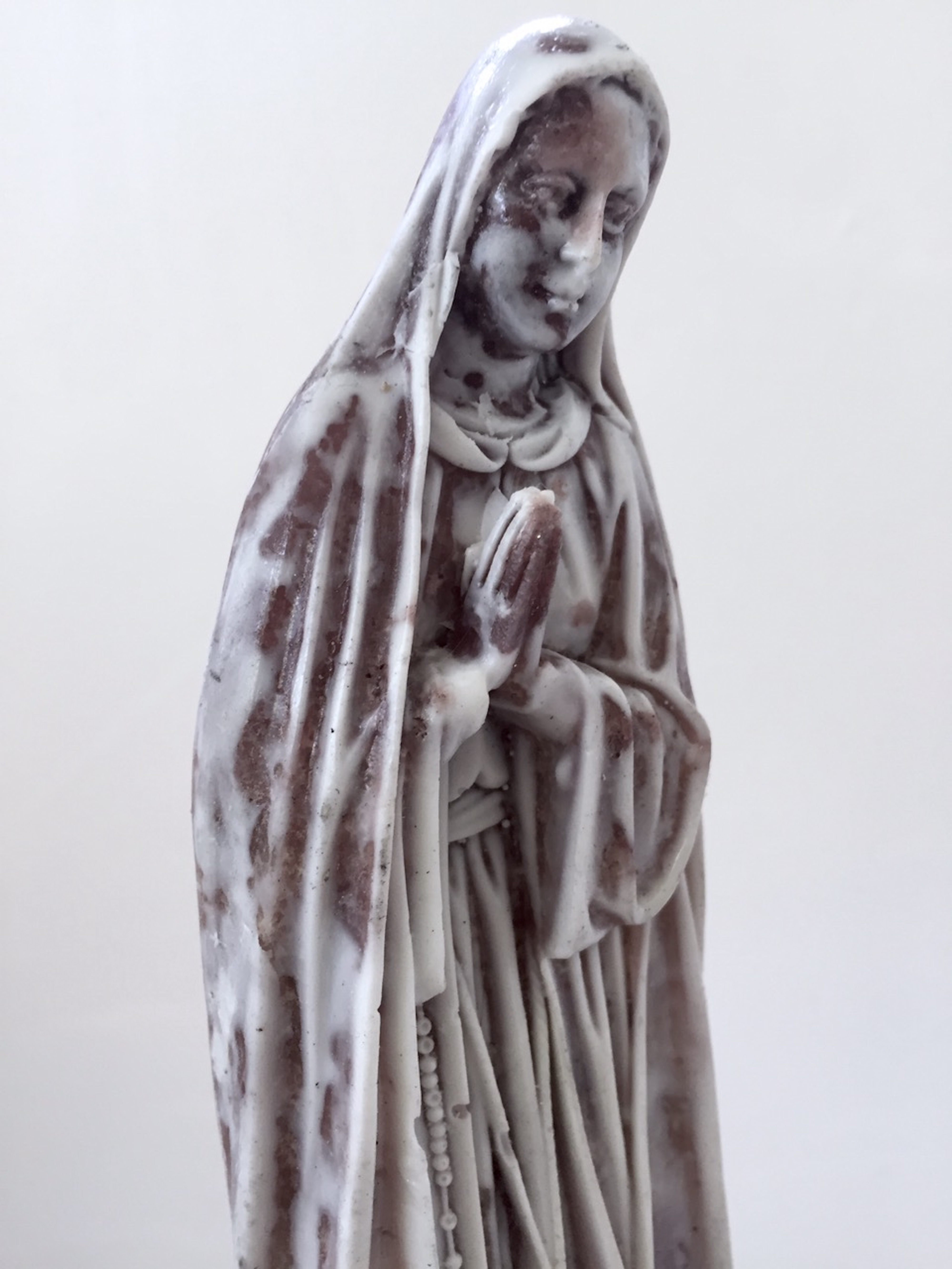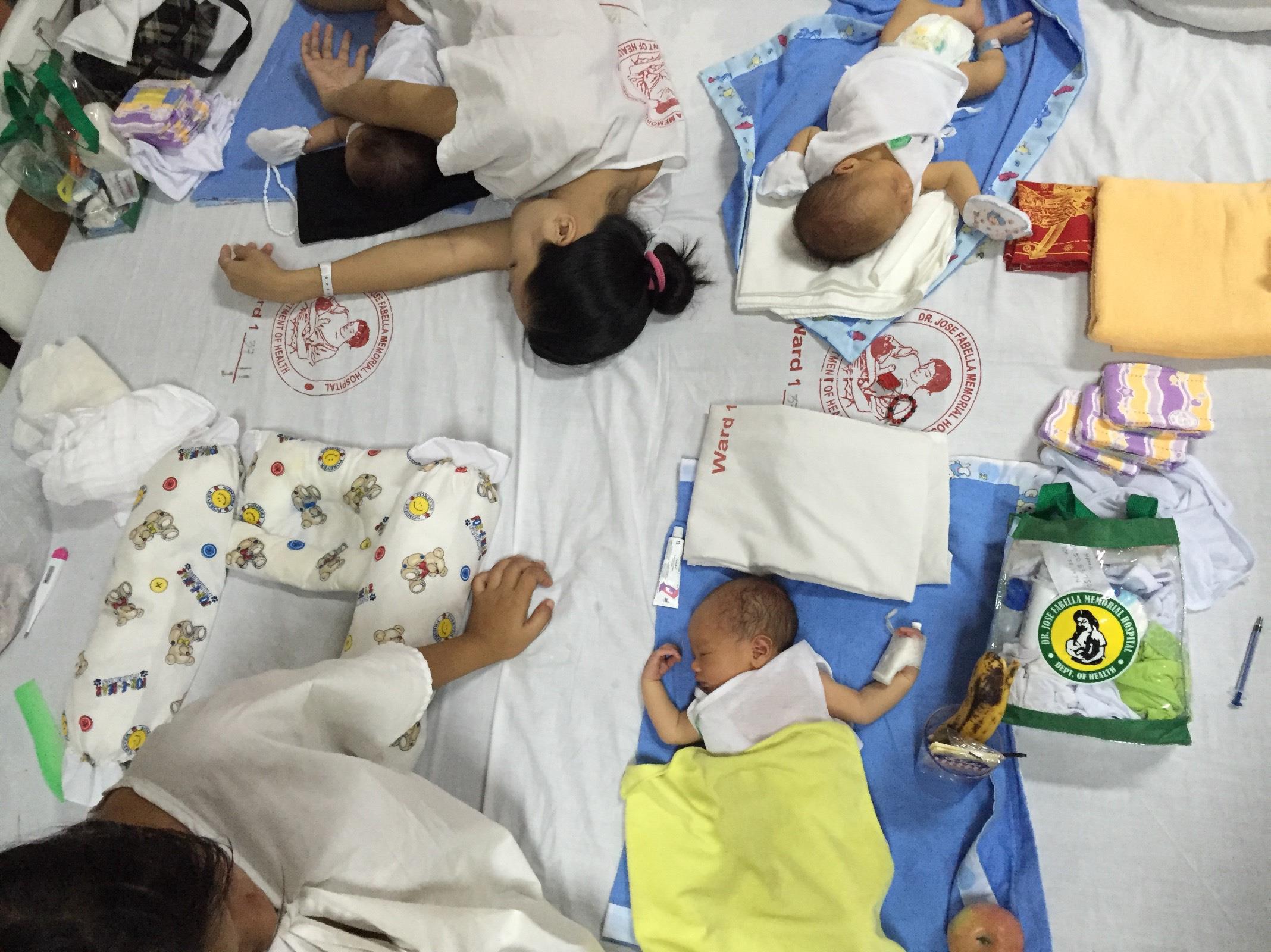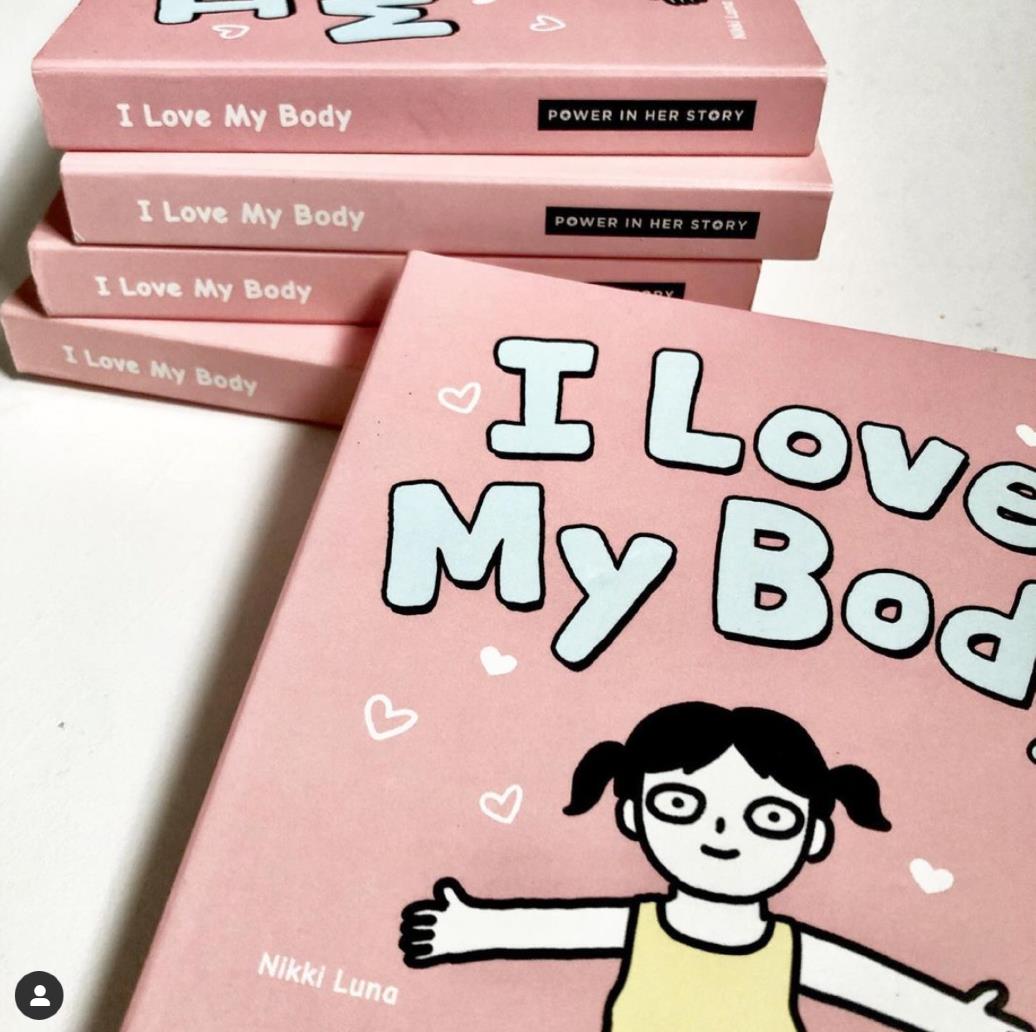This is the transcript of a talk delivered by Philippines artist Nikki Luna on May 20, 2021, at the Asia-Pacific regional launch of My Body is My Own, UNFPA's flagship State of World Population Report. Nikki Luna was one of several speakers from across the region invited to share their views on bodily autonomy and women's empowerment at the event.
I am Nikki Luna, artist/feminist/activist. I would like to share with you how I use my art as a tool in defending girl-child rights and women's human rights.
I think through some of the images I will share, we will be able to delve into the topic on Our bodies, as our own. I have picked three art works that I’ve made in the past years.
Let us start with a sculpture I exhibited in London. I recreated the “scared female” body. I used marble dust and maternal blood, casting the form of the Virgin Mary. When I say I used maternal blood, I actually was able to ask permission from those who have given birth if I could get the discarded blood from off the (hospital) floor. I had been fortunate to have some access since I was working with a community of girls/women for my art workshops in marginalized areas in Tondo Manila.

Artwork depiction courtesy Nikki Luna
The girls/women I’ve had the privilege to connect with, were going to give birth at one of the busiest maternal public hospitals in the world, delivering 60-100 babies in a period of 24 hours. I come from a country of currently, about 108.8 million population and with more than 500 adolescents becoming pregnant and giving birth everyday.

Photo shared by Nikki Luna
The girls who were giving birth were as young as 14 years old at that time, and on other occasions in the past the girls were even younger. A few of the 14-year-olds I was lucky enough to get to know, shared with me how she did not have access to sexual and health education, or how she was allowed to go with a man 10 years her senior.
(The image of the) ideal woman, that society has forced on young girls coming from centuries of feudal and patriarchal tradition propagated by colonizers through religion, which continues to be a key player in Philippine politics and culture. And if you as a girl/women choose not to comply to so-called tradition/customs, then prepare to be castigated and punished.
I have another art work, (where) I cast the birthday dress of Charlie Jean, fondly called CJ - she was just 14 when she was seduced by a man twice her age. The seventh grader had lacked access to sexual education, she blindly followed harmful social cultural norms, afraid of discrimination, faced with religious guilt, she moved in with her “boyfriend”.

Artwork depicted courtesy Nikki Luna
We lost this young girl'ss life, the cops stormed the home of the man Charlie Jean was with one night, shooting him, Charlie Jean died, from bullets lodged in her arms, stomach, and bottom. In a variation of “nanlaban,” to fight back in English, at the height of the notorious ‘war on drugs’ the cops claimed she was holding grenades. She was 15 at the tine of her death, and four months pregnant.
There are many problematic layers in this story, but one question we should ask is how a young girl ended up having sexual relations with an older man, carrying his child.
Let’s discuss further on the narratives of young girls, I was conducting art workshops in a center for gender-based violence victims in Manila for three years. I knew two 15-year-olds there. They were 12-years-old when they were robbed off their sense of agency to their own bodies. They were locked up in a room, where men took turns using them. The girls and their families did not know how to fight back, they could not resist, since the ones who held the girls against their will were cops.
Unequal power relations exist within relationships and in institutions that continue to use their power to keep oppressive structures to control girls' bodies.
This is why I made this last art work titled “Quince", I made a sculpture, cast a gun from an actual cop. the same gun model which threatened the 15-year-old girls. These are brutal realities, girls' bodies, killed by patriarchy, gender prejudice and poverty.

Artwork depicted courtesy Nikki Luna
The teenage pregnancy rate in the Philippines is still one of the highest adolescent birth rates among ASEAN member states. Teenage girls giving birth, 11.4% of all live births, only 3% are fathered by men in the same age group. The data clearly gives us a picture of older men engaging with teenage girls.
This is not an isolated problem, it exists in many parts of the world. These are the situations girls and women are living in right now globally, especially in "recovering nations."
There are, of course laws that empower —- such as having the Reproductive Health Law in the Philippines. And the Comprehensive Sexuality Education which is planned to be integrated soon for the K to 12 curriculum.
And there are laws as well that control — such as the requirement of having parental consent for adolescents to claim/seek reproductive health services which is plainly conflicting when we talk about bodily autonomy.
How do we support girls' rights to bodily autonomy? Being able to teach them that they have a choice, having autonomy equates to having access to rights-based information.
And we should remember this can only happen through collective action, with diverse stakeholders, from iinstitutions, organizations and communities with a mass-based practice and centering girls' needs/rights.
This is why I wrote my first children’s book, I Love My Body. It is in English, Filipino and now published in French. It teaches children about consent, valuing and owning their bodies. I thought if we will start somewhere, it is best to teach children as early as possible. If girls and women have no concept of bodily autonomy, then this is how oppression operates.

Our bodies are not merely receptacles for birthing, it is not made for any matrimonial bed, it is not solely for performing duties/roles and it should never be violated.
A girl/woman can see, feel and live in their bodies and yet are conditioned to think it is never owned by them, this is a struggle every girl is born into, that we must end.
When we grow up as a young girl, deprived of making our own choices with our own bodies, then as (the feminist American author and activist) bell hooks would say “ we risk relinquishing rights in all other areas of our lives”.



